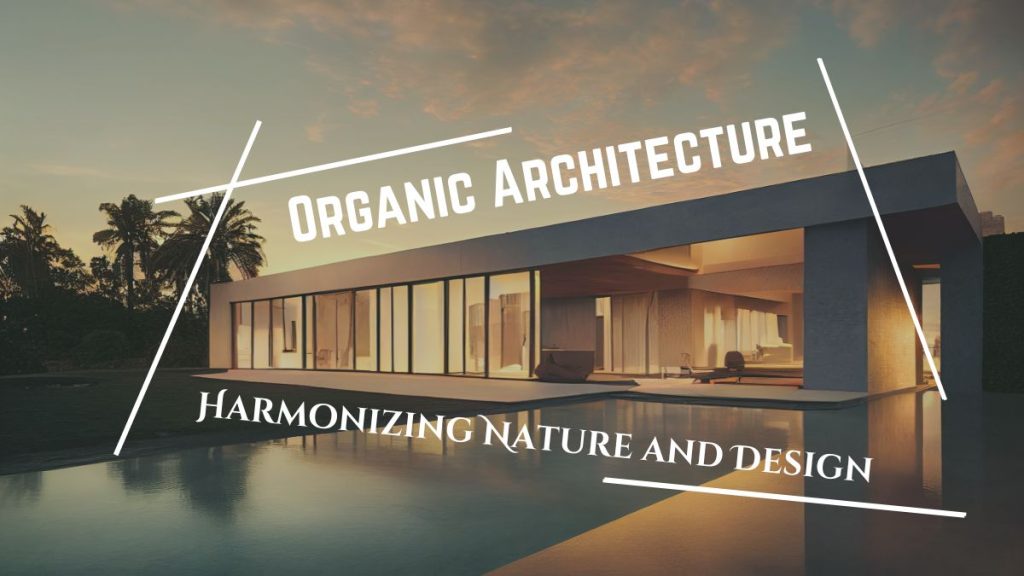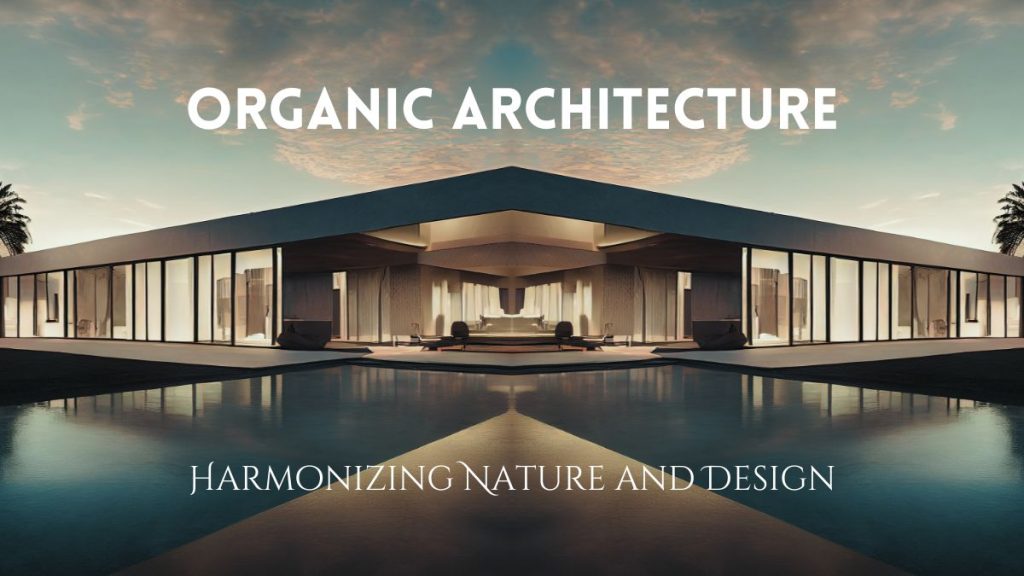Organic architecture is a philosophy that promotes harmony between human habitation and the natural world. It integrates buildings seamlessly into their environments.
Organic architecture, pioneered by Frank Lloyd Wright, emphasizes sustainability and natural aesthetics. Architects design structures that blend with their surroundings, using natural materials and forms inspired by nature. This approach not only enhances visual appeal but also supports environmental conservation.
By prioritizing energy efficiency and minimizing waste, organic architecture creates healthier living spaces. It fosters a deep connection between occupants and their environment, promoting well-being and harmony. This architectural style continues to inspire sustainable design practices worldwide, making it a vital aspect of modern architecture. Embracing organic architecture means building for a better, more harmonious future.
Related Article: Modern Architecture Styles: Discover Cutting-Edge Designs
You may also read: Alternative Careers for Architects: Exciting New Paths to Explore

Related Article: How Does Architecture Help Society: Shaping Our World
You may also read: Architectural Journalism: Exploring the Intersection of Design and Media
Introduction To Organic Architecture
Organic architecture is a design philosophy. It seeks harmony between human habitation and the natural world. This approach creates structures that integrate seamlessly with their surroundings. The goal is to make buildings that are part of the environment.
Origins And Philosophy
The origins of organic architecture trace back to the early 20th century. Frank Lloyd Wright, an American architect, pioneered this movement. Wright believed that buildings should grow naturally from their sites. This philosophy promotes harmony and balance.
Organic architecture embraces natural forms and materials. It rejects the conventional, rigid lines of industrial design. This approach reflects a deep respect for nature. It aims to create a cohesive and balanced environment.
Key Principles
Several key principles define organic architecture:
- Integration with Nature: Buildings blend with their natural surroundings.
- Use of Natural Materials: Materials like wood and stone are preferred.
- Simplicity and Efficiency: Designs focus on functionality and simplicity.
- Human Scale: Structures are designed to fit human proportions.
- Open Floor Plans: Spaces are fluid and flexible.
These principles ensure that buildings are not just structures. They are a part of the living environment.
| Principle | Description |
|---|---|
| Integration with Nature | Buildings blend with their natural surroundings. |
| Use of Natural Materials | Materials like wood and stone are preferred. |
| Simplicity and Efficiency | Designs focus on functionality and simplicity. |
| Human Scale | Structures are designed to fit human proportions. |
| Open Floor Plans | Spaces are fluid and flexible. |
Influential Architects
Organic architecture is a harmonious blend of human habitation and the natural world. It brings buildings and nature together. Some architects have deeply influenced this style. Let’s explore two of them.
Frank Lloyd Wright
Frank Lloyd Wright is a pioneer in organic architecture. He believed in designing structures that blend with nature. His most famous work is the Fallingwater house. It sits over a waterfall, blending seamlessly with the landscape.
Wright’s designs often included large windows and open floor plans. He used natural materials like wood and stone. This made his buildings feel part of their surroundings.
| Key Works | Features |
|---|---|
| Fallingwater | Built over a waterfall |
| Taliesin West | Desert-inspired design |
Antoni Gaudí
Antoni Gaudí was a Spanish architect known for his unique style. His work is characterized by flowing lines and organic forms. He drew inspiration from nature and religion.
One of his most famous works is the Sagrada Família. This basilica features intricate designs and natural elements. Gaudí used colored tiles and twisted iron to mimic natural forms.
- Sagrada Família
- Park Güell
- Casa Batlló
Gaudí’s work is a blend of architecture and art. His buildings often look like they grew from the ground. He used bright colors and natural shapes to create harmony.
Related Article: Architectural Design Concepts: Unleash Creativity

Related Article: The Timeless Appeal of Brick in Modern Architecture: A Complete Guide
You may also read: Architectural Solutions: Transforming Spaces with Innovative Design
Design Elements
Organic architecture embraces the harmony between human habitation and the natural world. This design philosophy seeks to integrate buildings with their surroundings. It uses natural materials and flowing forms to create structures that seem to grow from the environment.
Natural Materials
One key element in organic architecture is the use of natural materials. These materials include wood, stone, and clay. They blend seamlessly with the environment. Using these materials helps in reducing the carbon footprint.
Here is a table showing some common natural materials and their benefits:
| Material | Benefits |
|---|---|
| Wood | Renewable, Insulating, Aesthetic Appeal |
| Stone | Durable, Low Maintenance, Natural Beauty |
| Clay | Eco-Friendly, Thermal Mass, Versatile |
Natural materials provide a connection to nature. They create a warm and welcoming atmosphere. They also ensure sustainability and longevity of the structure.
Curvilinear Forms
Another essential design element is the use of curvilinear forms. These forms mimic the curves and shapes found in nature. They create a sense of flow and movement in the building.
Curves can be seen in:
- Roofs
- Walls
- Windows
Curvilinear forms soften the edges of the structure. They make it more organic and less rigid. These forms also enhance the aesthetic appeal and create a sense of harmony.
Using curves and natural shapes helps in achieving a balance. It blends the structure with the landscape. This makes the building look like a part of the natural surroundings.
Sustainable Practices
Organic architecture focuses on harmony with nature. Sustainable practices are vital. They help protect the environment and save resources.
Energy Efficiency
Energy efficiency reduces the use of non-renewable resources. Organic buildings use smart design to lower energy needs.
- Natural Light: Large windows and skylights bring in sunlight. This reduces the need for electric lighting.
- Passive Solar Design: Buildings are positioned to maximize sun exposure. This helps with heating in winter and cooling in summer.
- Insulation: High-quality insulation keeps buildings warm in winter and cool in summer. This reduces heating and cooling costs.
Eco-friendly Materials
Using eco-friendly materials lessens environmental impact. These materials are safe for people and nature.
| Material | Benefits |
|---|---|
| Bamboo | Strong, lightweight, and grows quickly. |
| Recycled Wood | Reduces waste and saves trees. |
| Rammed Earth | Natural, durable, and provides good insulation. |
These materials are biodegradable and non-toxic. They help create a healthy living space.
Modern Examples
Organic Architecture has evolved significantly, integrating seamlessly with its surroundings. Modern examples showcase innovative designs that prioritize harmony with nature. These structures emphasize sustainability and aesthetics, reflecting the principles of Organic Architecture.
Notable Buildings
Several buildings exemplify the essence of Organic Architecture in the modern era:
- Fallingwater: Designed by Frank Lloyd Wright, this house blends into its natural setting. It utilizes local materials and overhangs a waterfall.
- Casa Batlló: Antoni Gaudí’s masterpiece in Barcelona features organic forms and natural light. The building mimics the sea’s movement and colors.
- Church of the Light: Tadao Ando’s creation in Japan uses concrete and light to create a serene space. The building’s design emphasizes simplicity and nature.
Future Trends
The future of Organic Architecture is promising, with several trends emerging:
- Biophilic Design: Integrating natural elements into urban environments. This trend promotes health and well-being.
- Smart Materials: Using materials that adapt to environmental changes. These materials enhance energy efficiency and sustainability.
- Zero-Energy Buildings: Structures that produce as much energy as they consume. This trend focuses on renewable energy sources and efficient design.
Modern Organic Architecture continues to evolve, embracing new technologies and sustainable practices. These trends and notable buildings serve as inspiration for future designs.
Related Article: How to Choose the Right Architect: Top Expert Tips

Credit: www.domestika.org
Related Article: What Characteristics Identify Early Modern Architecture – A Complete Guide
You may also read: Best Architecture Books to Inspire Your Next Design Masterpiece
Conclusion
Organic architecture harmonizes buildings with their natural surroundings. This design approach promotes sustainability and aesthetic beauty. Embracing organic architecture can lead to healthier living spaces. It also fosters a deeper connection with nature. As more people seek eco-friendly lifestyles, organic architecture’s appeal continues to grow.
Explore this innovative design to enhance your environment.
Related Article: Architectural Design Process: Unveiling Creativity
You may also read: Brutalist Architecture Characteristics: Unveiling Bold Design Elements

Pingback: Architectural Journalism: Exploring the Intersection of Design and Media - SpaceArc